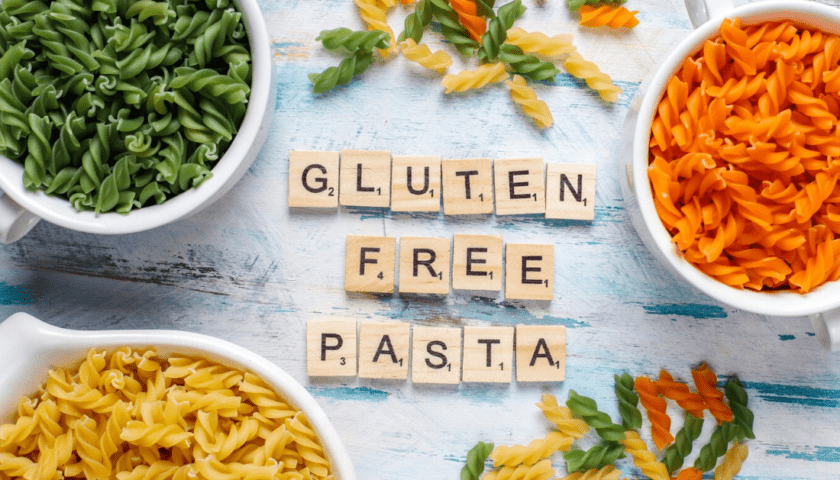Many of us have heard about a gluten-free diet, but how many of us actually know what exactly is it? Let’s find out about gluten and gluten-free diet in this blog.
What is gluten?
Gluten is a protein found in wheat, barley, and rye. It’s what gives bread and other baked goods their chewy texture. It’s actually a mixture of two proteins: gliadin and glutenin.
It’s important to note that gluten is not harmful to everyone. For the vast majority of people, consuming gluten-containing foods is safe and does not cause any adverse health effects. However, for people with coeliac disease or gluten sensitivity, following a gluten-free diet is essential for managing their condition and avoiding symptoms.
What is a gluten-free diet?
A gluten-free diet is a diet that excludes all gluten-containing foods. This includes bread, pasta, cereal, and many other processed foods. Gluten-free diets are essential for people with coeliac disease, gluten intolerance, and gluten sensitivity. Even small amounts of gluten can trigger a range of symptoms, including bloating, gas, diarrhoea, and abdominal pain.
However, some people also follow a gluten-free diet for non-medical reasons such as to get help with weight loss, increase energy levels, or improve digestion. It’s important to note that a gluten-free diet can also be restrictive and lead to nutrient deficiencies if not properly balanced. If you are considering such a diet, it’s important to consult with a healthcare professional or registered dietitian to ensure that your diet is nutritionally adequate.
How to follow a gluten-free diet?
If you need to follow a gluten-free diet, here are some tips to help you get started:
- Eat gluten-free food: Foods that are naturally gluten-free include fruits, vegetables, meat, fish, and dairy products. However, some processed foods may contain hidden sources of gluten, so it’s important to read food labels carefully.


- Use gluten-free substitutes: There are many gluten-free alternatives to bread, pasta, and other gluten-containing foods. For example, you can use corn, rice or almond flour instead of wheat flour when baking.
- Watch out for cross-contamination: Even a small amount of gluten can cause problems for people with coeliac disease or gluten sensitivity. Be careful when preparing food at home and avoid using the same utensils or cutting boards for gluten-free and gluten-containing foods.
- Consult a dietitian: If you’re not sure how to follow a gluten-free diet or need help with meal planning, consider consulting a dietitian. They can provide personalised advice and help you make sure you’re getting all the nutrients you need.
What foods can I eat as part of my gluten-free diet?
- Fruits and vegetables – All fresh fruits and vegetables are naturally gluten-free, so these should be a staple in your diet.
- Meat, poultry, and fish – All fresh meats, poultry, and fish are naturally gluten-free. However, processed meat products like sausages or deli meats may contain gluten, so it’s important to check the ingredients list.
- Gluten-free grains- There are several gluten-free grains that you can enjoy, including quinoa, rice, corn, amaranth, millet, and buckwheat.


- Legumes – Beans, lentils, and peas are all gluten-free and provide a good source of protein and fiber.
- Nuts and seeds – All nuts and seeds are naturally gluten-free and provide healthy fats and protein.
- Dairy products – Milk, cheese, and yogurt are all gluten-free. However, some processed dairy products like flavored yogurts may contain gluten, so be sure to check the ingredients list.
- Gluten-free flours and baked goods – There are several gluten-free flours available, including almond flour, coconut flour, and chickpea flour, which can be used to make gluten-free baked goods.
Do restaurants and takeaways serve gluten-free food?
A gluten-free diet is no longer a luxury. In recent years, more and more restaurants have been accommodating customers with dietary restrictions, including those who are gluten intolerant. Now you can get gluten-free pasta, pizza, cakes, noodles, curries. Basically, almost every dish which you love to eat can be prepared without gluten.
Restaurants and takeaways nowadays prepare food catered to one’s food allergies or dietary restrictions. In fact, many restaurants have gluten-free menus, and some even have a dedicated gluten-free kitchen or cooking area to prevent cross-contamination.
However, it’s always better to check your options before ordering. You can even ask questions about how the food is prepared to ensure that it is truly gluten-free.
Order delicious gluten-free takeaway food online via All Eat app. Your getaway to delicious outside food at affordable menu prices.